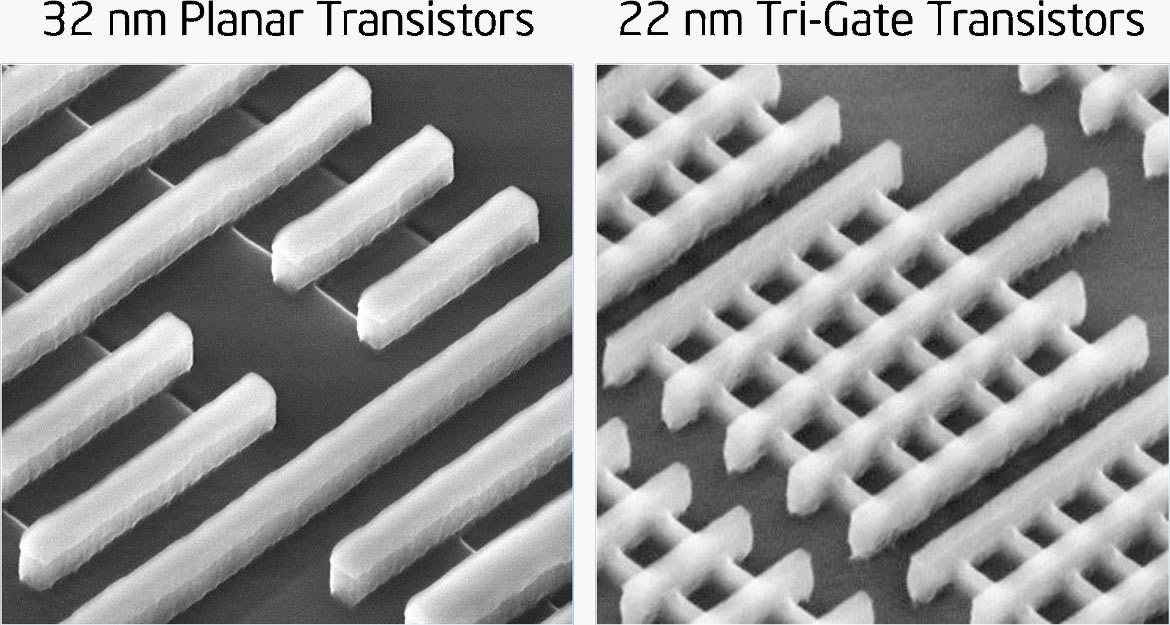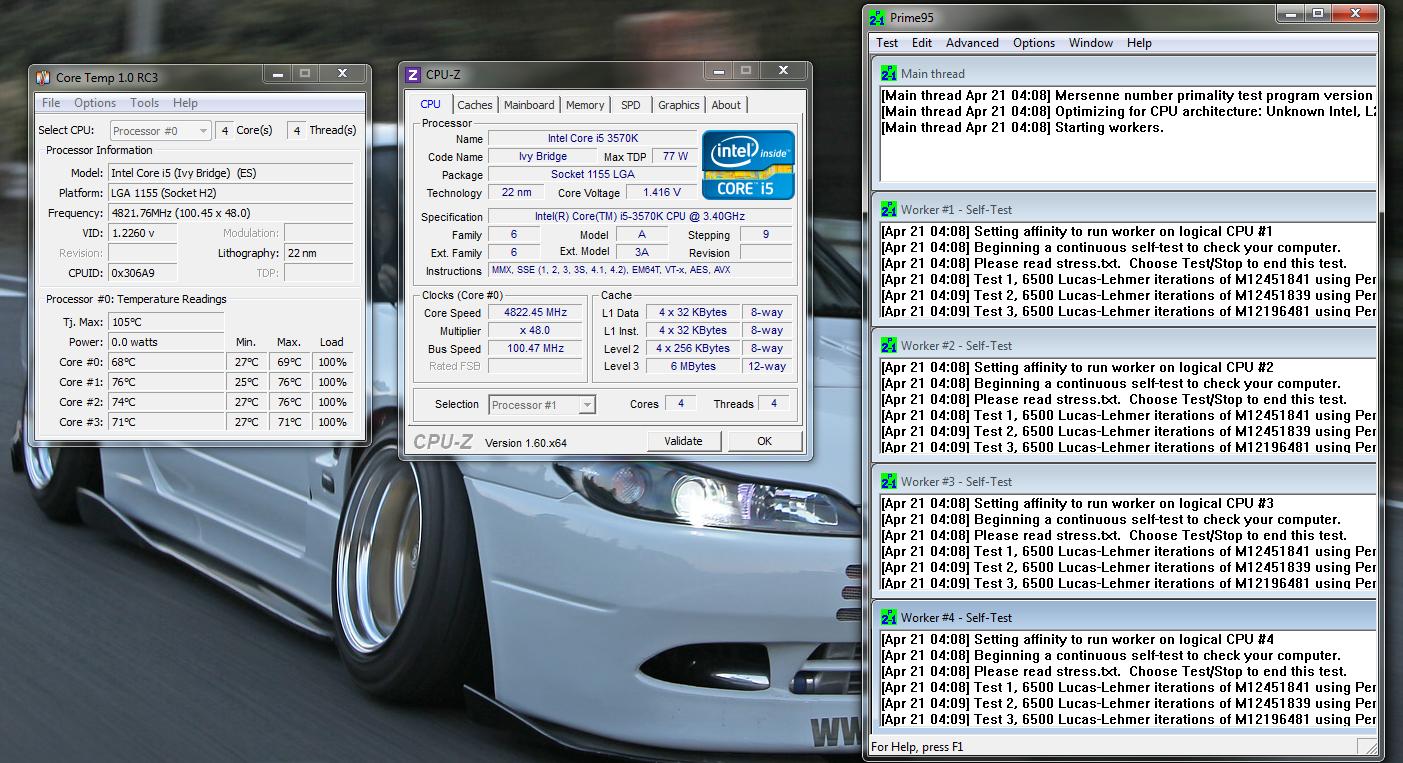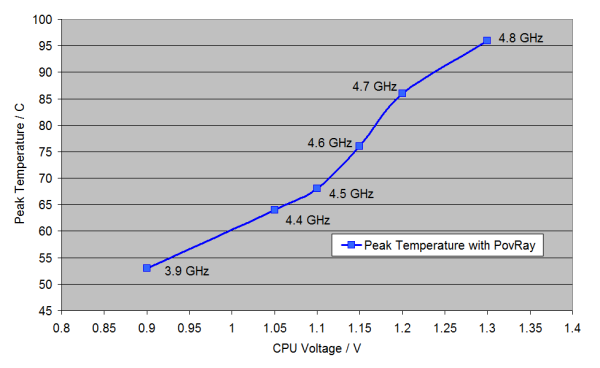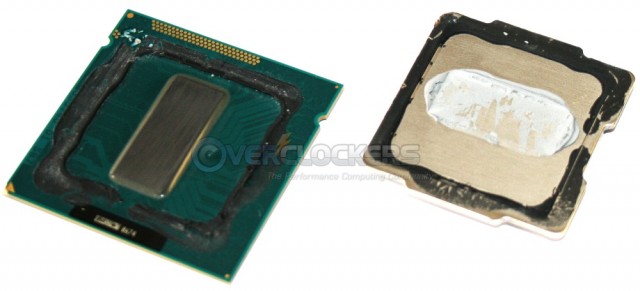Concillian
Diamond Member
- May 26, 2004
- 3,751
- 8
- 81
Less heat / less power consumed than SB at any given temperature.
Nobody knows where the temp sensor is in relation to where it is in SB, but throttling appears to happen at the same temperature as it did with SB.
Anyone going for less than ultimate / extreme overclocks will see less power usage with IVB than with SB for a given performance level. This given performance level will happen at a slightly lower clock due to IVB having ~5% extra performance at a given clock speed. 5% is about 200 MHz difference... so a 4.3 IVB is about equal to a 4.5 SB.
So basically for 4.3-4.5 GHz normal man type OCs, IVB will be superior.
For power consumption be damned 5+GHz OCs SB seems better.
In my case, I OC conservatively, and if I owned an SB, I probably wouldn't have run it more than 4.3 - 4.4. In this case an IVB is a clear winner. For those who have or would have pushed an SB to 4.8GHz+, IVB is clearly not a winner.
I primarily game, and have found very few cases where my 4GHz i3-530 (2 core + Hyperthreading) was inadequate. Even BF3 seems to do okay (not the best, but okay) with a dual + HT at those clock speeds. I don't expect IVB at 4.3-4.5GHz to limit me in ANY way. It will have about +40% single threaded performance over my 4 GHz clarkdale, which is a pretty significant improvement. I'm hoping around the same power consumption as my 2C / 4T for a 4C / 4T CPU. In things that I do other than gaming, I'm generally fine with my current performance level, and IVB will offer significant performance improvement just from the IPC improvement. The extra cores is like super bonus. I really think I'd be happy with an OCed 2C / 4T IVB, but Intel doesn't want me to have one.
Nobody knows where the temp sensor is in relation to where it is in SB, but throttling appears to happen at the same temperature as it did with SB.
Anyone going for less than ultimate / extreme overclocks will see less power usage with IVB than with SB for a given performance level. This given performance level will happen at a slightly lower clock due to IVB having ~5% extra performance at a given clock speed. 5% is about 200 MHz difference... so a 4.3 IVB is about equal to a 4.5 SB.
So basically for 4.3-4.5 GHz normal man type OCs, IVB will be superior.
For power consumption be damned 5+GHz OCs SB seems better.
In my case, I OC conservatively, and if I owned an SB, I probably wouldn't have run it more than 4.3 - 4.4. In this case an IVB is a clear winner. For those who have or would have pushed an SB to 4.8GHz+, IVB is clearly not a winner.
I primarily game, and have found very few cases where my 4GHz i3-530 (2 core + Hyperthreading) was inadequate. Even BF3 seems to do okay (not the best, but okay) with a dual + HT at those clock speeds. I don't expect IVB at 4.3-4.5GHz to limit me in ANY way. It will have about +40% single threaded performance over my 4 GHz clarkdale, which is a pretty significant improvement. I'm hoping around the same power consumption as my 2C / 4T for a 4C / 4T CPU. In things that I do other than gaming, I'm generally fine with my current performance level, and IVB will offer significant performance improvement just from the IPC improvement. The extra cores is like super bonus. I really think I'd be happy with an OCed 2C / 4T IVB, but Intel doesn't want me to have one.
Last edited:







